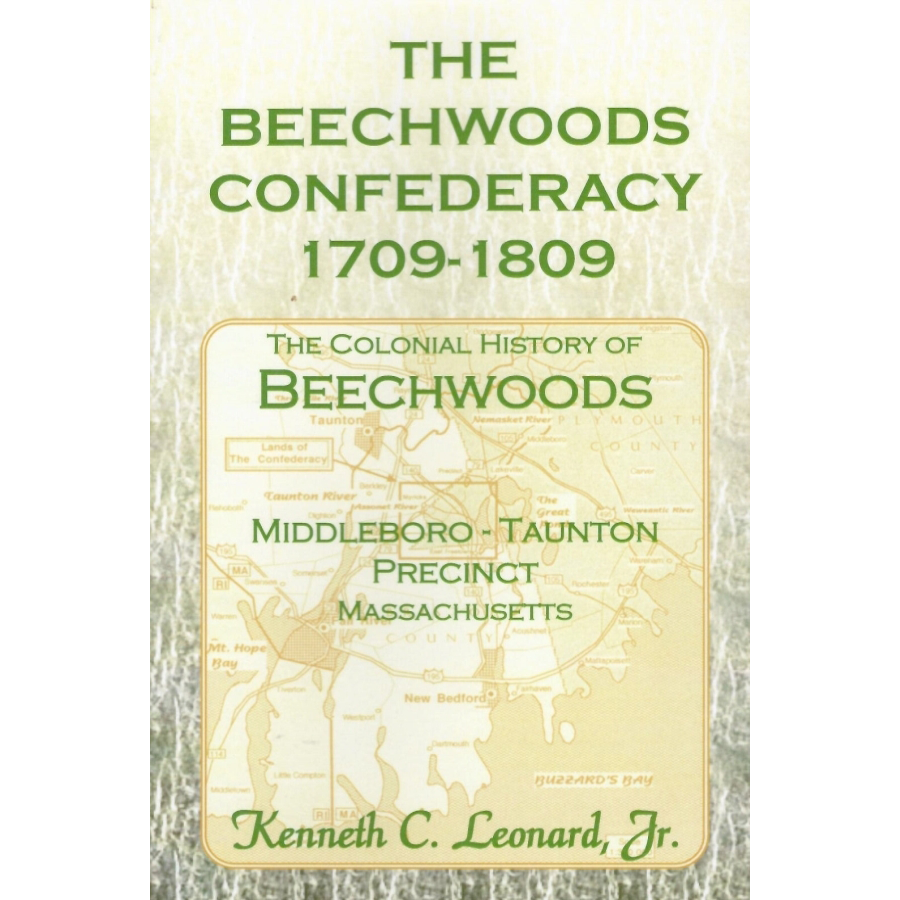The Beechwoods Confederacy, 1709-1809: The Colonial History of Beechwoods, Middleboro, Plymouth County, Massachusetts
Couldn't load pickup availability
This geographical area today retains much of its 19th century look and the author went in search for an explanation of 'why.' By focusing on geography and economy, Mr. Leonard's narrative provides an answer to his question and also fills in the gap in colonial history left inadequately discussed by earlier publications.
The author sets the stage by first discussing the expansion of Plymouth Colony (1620-1699) and the nascent beginnings of Beechwoods (1699-1709). The community is considered to have officially begun in 1709 with the arrival of several men who cleared a little road from the highway to their parcels of land and built houses. More men and families soon arrived. Businesses prospered in the 1720s: leather enterprises, sawmill, blacksmith, iron working, land speculation.
The halcyon years of the 1730s were followed by the confederacy of the 1740s that was expressed through the dynasty made up of the families of Peirce, Booth, and Hoar, and their close genealogical ties with the Holloways, Hoskinses, Howlands, Rounsvilles, and Reynolds families (and to a lesser extent the Nelsons of Assawampsett Neck). At this time, the community entrenched itself by actively securing landholdings on the perimeter to discourage public access and expel those whom it believed did not belong, and it suffered an accelerating inflationary spiral. Continuing economic problems in the 1750s were exacerbated by religious divisiveness.
The decades of the 1760s through the 1780s saw further challenges to life in Beechwoods as well as the community's involvement in the American Revolution. The remaining years to 1809 saw the community's retreat into isolation from the greater world around it: there were still no public thoroughfares leading through the settlement. Unlike so many other small communities that decay into the ground or disappear beneath the onslaught of progress, Beechwoods entered the 21st century, smaller than it once was perhaps but nevertheless laden with fascinating history.
Kenneth Leonard
(2003), 2009, 5.5" x 8.5", paper, index, 254 pp.
ISBN: 9780788423611
101-L2361
